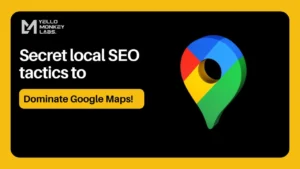We have received perfect answers to our questions on Google right at the top of the page. Instant solutions have worked as magic for users for a while, and the advent of AI is taking it forward. It resulted from a growing trend called Answer Engine Optimization (AEO).
This shift is reshaping how we create content, and AEO is its core. Let’s explore how AEO works, why it matters, and how you can use it to make your content stand out.
Understanding AEO
Answer Engine Optimization (AEO) focuses on optimizing content to provide direct answers to user questions. Unlike traditional SEO, which aims to improve a website’s ranking, AEO helps search engines display quick, precise answers.
The goal is to deliver information right in the search results without needing users to click a link. So, how does this work?
Natural language processing (NLP) allows search engines to understand and interpret the intent behind queries. Machine learning helps refine this process over time, improving the accuracy of the answers provided. We get the exact result in front of us for our queries.
Key Components of AEO
Content Optimization for Featured Snippets
To optimize content for featured snippets, focus on answering user queries directly and concisely. Use clear headings, bullet points, or numbered lists to make information easy for search engines to extract. Snippet results improve and open you to target audience to establish yourself as trusted source
Content Authority
Building authority means sourcing information from reputable, trusted places. Use data, studies, or expert opinions to back up your content. Citing well-known sources helps build credibility and signals to search engines that your content is reliable and accurate.
User Intent
Understanding user intent is key to AEO. There are three main types: informational (seeking knowledge), navigational (looking for a specific website), and transactional (wanting to make a purchase).
Tailor your content to match these intents by providing clear answers, guides, or links based on what users are searching for.
Structured Data Markup
Structured data, like schema markup, helps search engines better understand and display your content. By using schema, you can highlight key information like FAQs, reviews, or product details. This improves the chances of your content being shown in featured snippets or answer boxes.
AEO vs Traditional SEO
Both AEO and traditional SEO aim to improve search engine visibility. They rely on high-quality, relevant content and keywords that align with user queries.
Key Differences
The main difference is the end goal. Traditional SEO focuses on ranking higher in search engine results pages (SERPs) to drive clicks and traffic to a website. AEO, on the other hand, focuses on providing direct answers within the search results, often in featured snippets or voice searches, without requiring a click.
When to Focus on AEO vs. SEO
If your goal is to drive traffic to your website or build brand awareness, traditional SEO should be the priority. If you’re aiming to capture voice search, featured snippets, or quick answers to boost visibility without relying on clicks, AEO is more important.
For most businesses, a balance of both strategies will yield the best results.
Implementing AEO Techniques
Research User Queries
Start by researching common user questions using tools like Google’s “People Also Ask” feature or websites like AnswerThePublic. These tools reveal the most frequently searched queries related to your topic.
By understanding what users are asking, you can create content that directly addresses their needs and aligns with popular search patterns.
Create Clear, Targeted Answers
Once you know what users are asking, focus on creating concise, targeted answers. Keep your responses short, clear, and to the point. Aim to provide the most relevant information upfront, ensuring your content directly answers the query in the simplest way possible.
Optimizing for “People Also Ask” Boxes
To increase your chances of appearing in “People Also Ask” boxes, structure your content in a Q&A format. Include common questions as headings and provide clear, direct answers underneath. This helps search engines easily extract and display your answers in these helpful, prominent boxes.
Optimize for Voice Search
Voice search queries tend to be conversational and phrased as full questions. To optimize for voice search, write your content in a natural, conversational tone that mimics how people speak.
Use complete sentences and focus on providing direct answers to common spoken queries, which will help capture voice search traffic.
Benefits of AEO
Increased Visibility in Search Results
AEO helps your content appear in featured snippets, “People Also Ask” boxes and voice search results. By providing direct answers to user queries, your content is more likely to be displayed at the top of search results, giving you greater exposure without needing to rank traditionally.
Higher Engagement Rates Due to Direct Answers
When users find the answers they need instantly, engagement with your content improves. Direct answers increase the chances of users interacting with your site, whether by clicking through for more information or engaging with other content.
Improved User Experience on Websites
By focusing on delivering clear, concise answers, AEO enhances the user experience. Visitors to your site can quickly find the information they’re looking for, leading to higher satisfaction and potentially improved retention rates.
Conclusion
AEO is here to stay, and adapting to it will keep your content competitive. It’s a smart move for anyone focused on driving results. Want to improve your rankings? Start applying these strategies today.
Yellomoney Lab is an established digital marketing agency in Housten that uses innovative strategies. We offer website development, SEO, SMM, and graphic design services worldwide. Contact us today to learn how to elevate your business’s digital presence and attract global clients.





Pingback: enclomiphene deliver to uk fed ex overnight
Pingback: medicament kamagra pharmacie au rabais vallee d aoste
Pingback: ordering androxal generic how effective
Pingback: buy cheap dutasteride generic available in united states
Pingback: get flexeril cyclobenzaprine cheap
Pingback: buy cheap gabapentin buy in the uk
Pingback: get fildena uk delivery
Pingback: itraconazole ireland over the counter
Pingback: purchase avodart price in us
Pingback: discount staxyn buy mastercard
Pingback: discount rifaximin toronto canada
Pingback: buying xifaxan cheap sale
Pingback: objednejte si kamagra online bez lékařského předpisu